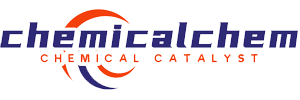Latest article

BDMA Catalyst: Improving Reactivity in Polyurethane Foam Production
BDMA Catalyst: Enhancing Reactivity in Polyurethane Foam Production Introduction Polyurethane foam, a versatile and widely-used material, finds its applications in various industries ranging from cons…

Environmental Impact and Safety Profile of BDMA Catalyst in Industrial Applications
Environmental Impact and Safety Profile of BDMA Catalyst in Industrial Applications Introduction In the world of industrial chemistry, catalysts are the unsung heroes that facilitate countless reactio…

BDMA Catalyst: A Key to Developing High-Performance Polyurethane Products
BDMA Catalyst: A Key to Developing High-Performance Polyurethane Products Introduction Polyurethane (PU) is a versatile polymer that has found applications in various industries, from automotive and c…

Innovative Applications of BDMA Catalyst in Sustainable Polyurethane Materials
Innovative Applications of BDMA Catalyst in Sustainable Polyurethane Materials Introduction Polyurethane (PU) is a versatile polymer that has found its way into numerous applications, from furniture a…

BDMA Catalyst: A Comprehensive Analysis of Its Chemical Properties
BDMA Catalyst: A Comprehensive Analysis of Its Chemical Properties Introduction Bis(dimethylamino)methane, commonly known as BDMA, is a versatile and widely used catalyst in various chemical processes…

2,2,4-Trimethyl-2-Silapiperidine: A Breakthrough in Polyurethane Sealant Technology
2,2,4-Trimethyl-2-Silapiperidine: A Breakthrough in Polyurethane Sealant Technology Introduction Polyurethane sealants have long been a cornerstone of modern construction and manufacturing industries.…

2,2,4-Trimethyl-2-Silapiperidine: Innovations in Polyurethane Adhesive Development
2,2,4-Trimethyl-2-Silapiperidine: Innovations in Polyurethane Adhesive Development Introduction In the world of adhesives, innovation is the key to unlocking new possibilities. The development of poly…

2,2,4-Trimethyl-2-Silapiperidine: The Future of Polyurethane in Renewable Energy
2,2,4-Trimethyl-2-Silapiperidine: The Future of Polyurethane in Renewable Energy Introduction In the ever-evolving landscape of renewable energy, materials science plays a crucial role in advancing te…

2,2,4-Trimethyl-2-Silapiperidine: A Comprehensive Analysis of Its Market Potential
2,2,4-Trimethyl-2-Silapiperidine: A Comprehensive Analysis of Its Market Potential Introduction In the world of organic chemistry, certain compounds stand out for their unique properties and potential…

2,2,4-Trimethyl-2-Silapiperidine: Enhancing Performance in Polyurethane Coatings
2,2,4-Trimethyl-2-Silapiperidine: Enhancing Performance in Polyurethane Coatings Introduction In the world of coatings, polyurethane (PU) has long been a favorite among manufacturers and end-users ali…


